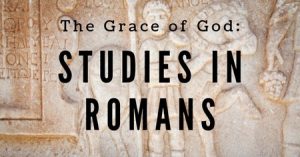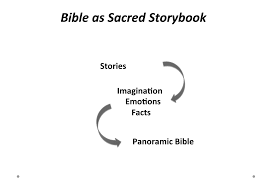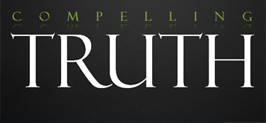
Shownotes
Wisdom-Trek / Creating a Legacy
Welcome to Day 1266 of our Wisdom-Trek, and thank you for joining me.
I am Guthrie Chamberlain, Your Guide to Wisdom
Mastering the Bible – Conveys Meaning – Worldview Wednesday

Wisdom – the final frontier to true knowledge. Welcome to Wisdom-Trek where our mission is to create a legacy of wisdom, to seek out discernment and insights, and to boldly grow where few have chosen to grow before.
Hello, my friend, I am Guthrie Chamberlain, your captain on our journey to increase wisdom and create a living legacy. Thank you for joining us today as we explore wisdom on our 2nd millennium of podcasts. This is Day 1266 of our trek, and it is Worldview Wednesday. Creating a Biblical worldview is important to have a proper perspective on today’s current events.
To establish a Biblical Worldview, you must also have a proper understanding of God and His Word. Our focus for the next several months on Worldview Wednesday is Mastering the Bible, through a series of brief insights. These insights are extracted from a book of the same title from one of today’s most prominent Hebrew Scholars, Dr. Micheal S. Heiser. This book is a collection of insights designed to help you understand the Bible better. When we let the Bible be what it is, we can understand it as the original readers did, and as its writers intended. Each week we will explore two insights.
Mastering The Bible – Conveys Meaning
Insight Seventeen: The Writers of the Bible Structured What They Wrote to Convey Meaning

If you’ve ever had to outline a paper or prepare notes for a company meeting at work, you know that how the elements in your writing or presented or arranged will matter a lot for how it’s received and understood.
How information is “packaged” can be crucial for comprehension. People who work with large amounts of data know especially well that their information presentation often dictates whether their work is grasped or ignored. For that reason, pollsters and statisticians often use visuals, infographics, pie charts, and tables to present their work. A good visual can draw the eye immediately to the most important points the data conveys.
When it comes to writing, skilled authors structure material for the same payoff. They may not use colorful graphs, but there are ways of structuring material to draw the eye, or, in the case of the ancient world, the ear, to the important points.
One example that’s well known to biblical scholars is the use of chiasm. The word chiasm is derived from the Greek letter chi, which is written like the letter X. Imagine cutting the X vertically in half. The arms of an X move toward the center point and then veer outward again in the opposite direction. Chiasm refers to doing that in writing. The writer builds a scene or an argument in one direction and then begins to “work backward” following the same path.
By way of illustration, consider Romans 2:6—11. Let me read this passage, “He will judge everyone according to what they have done. He will give eternal life to those who keep on doing good, seeking after the glory and honor and immortality that God offers. But he will pour out his anger and wrath on those who live for themselves, who refuse to obey the truth and instead live lives of wickedness. There will be trouble and calamity for everyone who keeps on doing what is evil—for the Jew first and also for the Gentile. But there will be glory and honor and peace from God for all who do good—for the Jew first and also for the Gentile. For God does not show favoritism.”

Notice how the content of the verses moves toward a point (marked by letters) and then “reverses” itself element-by-element:
- God will judge everyone equitably (v. 6).
- Those who seek God’s glory and honor will receive eternal life (v.7).
- Those who are unrighteous will receive judgment (v. 8).
- Those who are unrighteous will suffer judgment (v. 9).
- The righteous receive glory and honor (v. 10).
- God will judge everyone without partiality (v. 11).
The arrangement is deliberate, not accidental. Like the rest of the letters of the New Testament (the Epistles), Romans would have been read aloud. Alert listeners would have detected repetition patterns like this structure. They would have made the content easier to remember. And like this example, the structuring highlights the most important thoughts in a pattern.
Biblical writers wrote with intention. We need to read them that way.
Insight Eighteen: The Biblical Writers Did Their Homework

Most people are familiar with how libraries divide books into fiction and nonfiction. The difference, of course, is that fiction is contrived, it’s storytelling where the story is an exercise of the imagination. This is true even if the story is based on real events and people. If the story did not actually happen, then no matter how closely it resembles reality, it’s still fiction. Nonfiction, in simplest terms, is the opposite. The writer is giving the reader a recounting of something that actually happened or providing information that is factually real.
We don’t often think about it, but there are many subcategories to both classifications. Not all nonfiction is created equal. Some of it is academic: the writer did a good deal of research, and the research is detailed and dense.
The biblical writers were careful researchers as well. Scholars know that for two reasons. First, the Scripture itself informs us that sources were used for points of information. A “Book of Jashar” is mentioned as a source for biblical material on two occasions (Joshua [10:13]; 2 Samuel [1:18]). Numbers [21:14] refers to a source called “The Book of the Wars of the Lord.” Luke, who was not an eyewitness to the life of Jesus, apparently made use of sources in writing his Gospel (Luke 1:1—4).
Second, even when the biblical writers don’t name their sources, scholars have been able to trace phrases, poetic lines, and symbols found in Scripture to older or contemporary sources in the writings of other civilizations. Biblical writers were under no obligation to indicate when they used sources. There was no sense of intellectual property in the ancient world that required anything like modern footnoting. Luke and Paul quoted classical Greek poets on several occasions (Epimenides of Crete in Acts [17:28]; Menander in 1 Corinthians [15:33]; Epimenides of Crete in Titus [1:12]). The author of Psalm 74 draws material from the Canaanite Baal Cycle about the defeat of the primeval sea, which is personified as a sea beast (Leviathan) to describe how God brought order out of chaos. Portions of Proverbs 22 are drawn from an earlier Egyptian text called “The Wisdom of Ainenemope.”
Inspiration does not forbid the use of sources. In fact, the use of sources is another illustration of how inspiration was not a paranormal experience. Biblical writers used material known in their day for factual information and to help articulate arguments and theological assertions. We do the same sort of thing today when we use information outside the Bible to help people understand Scripture. The difference, of course, is that what we say isn’t divine revelation.
That will conclude this week’s lesson on another two insights from Dr. Heiser’s book “Mastering The Bible.” Next Worldview Wednesday, we will continue with two additional insights. I believe you will find each Worldview Wednesday an interesting topic to consider as we build our Biblical worldview.
Tomorrow we will continue with our 3-minute humor nugget that will provide you with a bit of cheer, which will help you to lighten up and live a rich and satisfying life. So encourage your friends and family to join us and then come along with us tomorrow for another day of our Wisdom-Trek, Creating a Legacy.

If you would like to listen to any of our past 1265 treks or read the Wisdom Journal, they are available at Wisdom-Trek.com. I encourage you to subscribe to Wisdom-Trek on your favorite podcast player so that each day’s trek will be downloaded automatically.
Thank you so much for allowing me to be your guide, mentor, and, most of all, your friend as I serve you through the Wisdom-Trek podcast and journal.
As we take this trek together, let us always:
- Live Abundantly (Fully)
- Love Unconditionally
- Listen Intentionally
- Learn Continuously
- Lend to others Generously
- Lead with Integrity
- Leave a Living Legacy Each Day
I am Guthrie Chamberlain reminding you to Keep Moving Forward, Enjoy Your Journey, and Create a Great Day Everyday! See you tomorrow!